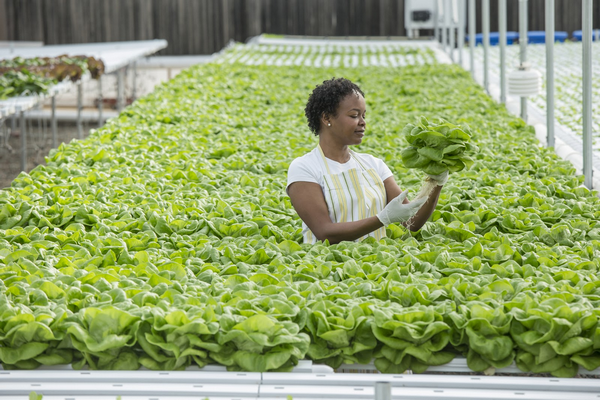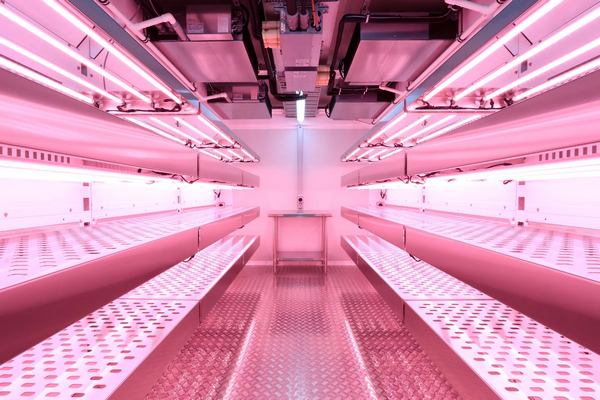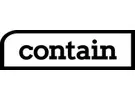As the indoor agriculture industry continues to grow, we’re beginning to see more and more well-known industry outsiders enter the market. But why are these companies venturing into this unknown terrain?
In addition to rapid growth potential, the CEA industry offers companies an opportunity to apply their expertise in support of a climate-resilient and financially sustainable food system. To better understand the motives of these companies, Contain has spoken with its vendor Schneider Electric about their entrance into the space and the factors that led them to do so.
Schneider Electric is a company that provides energy and automation digital solutions for efficiency and sustainability with a global reach that spans more than 100 countries. When asked what Schneider “does,” employees often say it’s better to ask what it doesn’t do. The company addresses homes, buildings, data centers, infrastructure, and industries by combining energy technologies, real-time automation, software, and services. Schneider empowers all to make the most positive and considerable impact possible, and with a unique competency for holistic energy management, the opportunity for positive change within CEA is significant.

Photo courtesy of Schneider Electric
Schneider initially found great integration of its solutions while working with Canadian and European companies in the CEA space around 2018. Shortly after, the company recognized the tremendous impact it could make on CEA food systems in the US. Early in the COVID-19 pandemic, when supply chain disruptions devastated the traditional farming sector, it became increasingly evident that the indoor agriculture industry and its growth are imperative for the development of resilient food systems.
Despite the industry’s positive environmental and societal impacts, operating CEA systems often result in high energy costs and large environmental footprints. In the past, data and energy management in indoor farms have been manual, but Schneider believes it has the tools and expertise to empower the industry to be more sustainable, efficient, and resilient. Schneider’s energy management solutions can automate operations and lower energy parameters for the benefit of farmers, consumers, and the planet.
From a financial perspective, many of the emerging companies within the indoor ag industry are small businesses seeking large capital investments to expand their current operations. Schneider sees this as a sign of extraordinary industry growth and believes that scaling operations is critical and achievable by harnessing the power of digital technology and service expertise.
"We are very excited about our new relationship with Contain,” said Lisa Causarano, Schneider Electric Account Manager. “Experience has taught us that indoor farms have unique needs and challenges that many lenders are unable to serve. Contain brings expertise that makes it possible to address the extraordinary energy management needs for indoor growing, allowing them to focus on new ways grow more efficiently to feed expanding populations.”
Another example of an industry “outsider” entering Controlled Environment Agriculture is MineARC. MineARC is a global leader in the “manufacture and supply of controlled environments”, However, MineARC didn’t make its start in agriculture. You can probably discern from its name that MineARC originally produced controlled environment technology for safer industrial mining, tunneling, and petrochemical plant practices, with over 2,500 life-saving refuge chambers across industrial sites globally.

Photo courtesy of Schneider Electric
MineARC realized that the value of controlled environments can be felt within many industries--including agriculture. The company notes that the ability to control the parameters of a facility to simulate optimal growing conditions results in endless possibilities, including healthier food options year-round and less natural resource use. The company created the Biora Range for agricultural use by applying the same techniques and capabilities it used to create controlled environment chambers for personnel safety.
Since launching Biora, MineARC has already made its mark across Australia, Europe, and North America; with a range of plant growth, research-grade, medical cannabis, and clean room chambers now in the field. The portable, robust nature of the Biora Walk-In Chambers has made them a popular alternative to on-site construction options.
The food system is one that every person on this earth takes part in. Companies are enticed by the rapid growth of the indoor agriculture industry, and they are further persuaded to participate by the immense environmental, social, and economic value that can be achieved. We believe this is only the beginning of new entrants joining the indoor ag movement.

